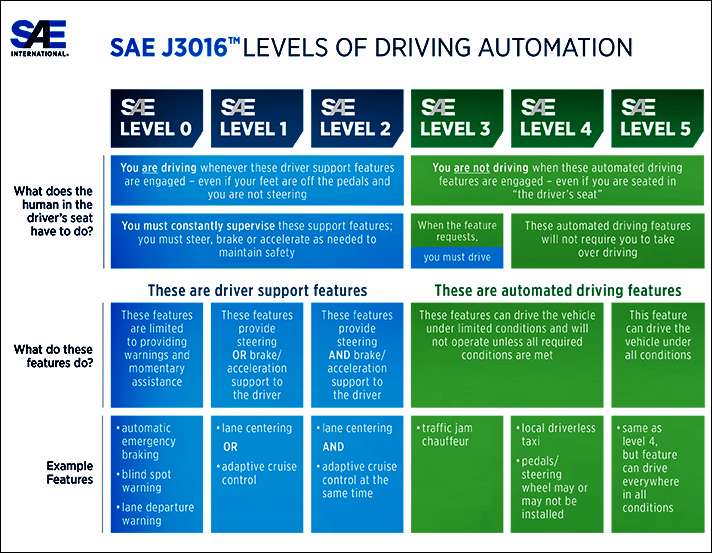As far back as the 1980s and 1990s, Mercedes-Benz was already developing autonomous vehicles (AVs) that could operate without driver control. Seeing that there was interest in self-driving vehicles, the automaker began to develop intelligent systems and tested them in various environments.
By the mid-1990s, it had a S-Class which had been developed as part of the European PROMETHEUS program and this prototype could cover more than 1,600 kms autonomously. It was even able to reach 185 km/h on the speed limit-free autobahn (under controlled conditions).

In order to ensure maximum safety, extensive testing was done in all kinds of conditions around the world. By 2017, Mercedes-Benz offered some models with limited autonomous capabilities. Laws regulating AVs began to be enacted and had demanding legal requirements so manufacturers had to meet them in order to get approval.
In 2021, Mercedes-Benz was the first automaker in the world to get approval (under technical regulation UN-R157) and it was only for a Level 3 system (there are 5 levels). It was for the 2022 S-Class and the autonomous system was known as DRIVE PILOT.

The intelligent system allowed the driver to switch on automated mode and the car could travel on its own at speeds of up to 60 km/h in heavy traffic or congested situations on certain stretches of the autobahn in Germany. The driver was totally hands-off and could even do other things like talk on the phone or even check e-mail. The system approval was later also given to the fully electric EQS.

Of course, the ultimate goal would be Level 5 which means the vehicle does everything on its own – all the driver has to do is say the destination and it will find its way there. The road system will have to be more advanced to support AVs at this level and that will be some time more.

World’s fastest production AV
In the meantime, Mercedes-Benz continues to improve the DRIVE PILOT and recently, the system was updated when approval was given by the German Federal Motor Transport Authority. This update makes DRIVE PILOT the fastest certified system for conditionally automated driving in a standard production vehicle.
With this latest upgrade, the DRIVE PILOT can be used in flowing traffic up to 95 km/h under certain conditions on the entire 13,191 km-long German Autobahn network. This allows more frequent use and for longer periods of time in automated driving mode.

When DRIVE PILOT is activated, it is legally allowed for the driver to do other things, such as watching TV or YouTube, reading on a tablet or even doing work and making calls… while in a car moving at 95 km/h.
The DRIVE PILOT is optionally available on the S-Class and EQS for an additional 5,950 euros (about RM27,800). Cars with DRIVE PILOT that have been already built get the update for free (either as an Over-The-Air update or at the service centre). There is no need to change any vehicle components for the software update.
Redundant systems
Safety has always been a top priority for Mercedes-Benz, more so with an AV. the system has a redundant design, which means that important functions such as electrics, steering and braking are duplicated. If necessary, the system is always able to transfer the driving task back to the person behind the steering wheel.
If the driver fails to take back control even after increasingly urgent prompting and expiration of the takeover time (eg, due to a severe health problem), the system brakes the vehicle to a standstill in a controlled manner while engaging the hazard warning lights.

More than 35 sensors such as cameras, radars, ultrasonic sensors, and LiDAR (laser-radar) are used. These work according to different physical principles and thus create redundancies for precise real-time detection of the environment. For SAE Level 3 and higher, the use of LiDAR is essential for Mercedes-Benz for safe automated driving.

In combination with a very detailed digital map, a special positioning system ensures that DRIVE PILOT knows exactly on which highway lane the vehicle is driving on – in the range of a few centimetres.
130 km/h by end of decade
The development at Mercedes Benz goes on with the goal to offer drivers even more: higher speeds, longer driving times without intervention by the driver and even more comfort and safety. Road traffic will get safer the more automated driving vehicles populate the roads. Currently, the legally allowed top speed for conditionally automated driving in Germany is 130 km/h and the automaker wants to achieve this speed range by the end of this decade.
The development also considers aspects that are not directly linked with the technology for automated driving. Mercedes-Benz is the world’s first automobile manufacturer to develop special turquoise lights that indicate from the outside when DRIVE PILOT is active. This enables other road users to recognize a Level 3 vehicle and feel comfortable if they see a driver who reads a book, for example. It also allows the police to identify the system’s status.

Although the use of such ‘Automated Driving Marker Lights’ has not yet been permitted in Germany, the feedback from the first test round in the USA is positive. They are approved in two states and are still under testing, and will be installed on production cars when approval is granted.
Mercedes-Benz VISION EQXX sets efficiency record in desert conditions

